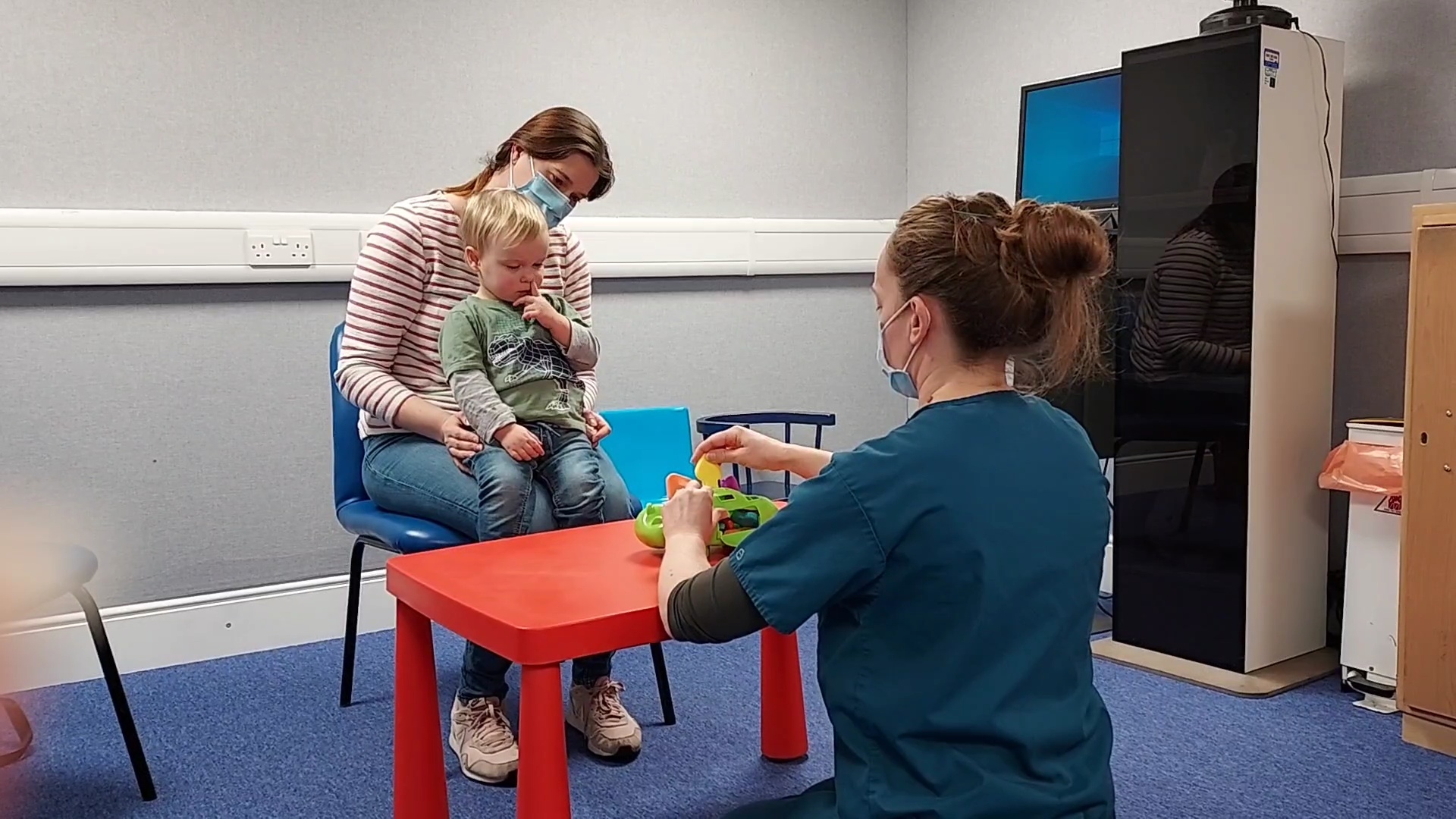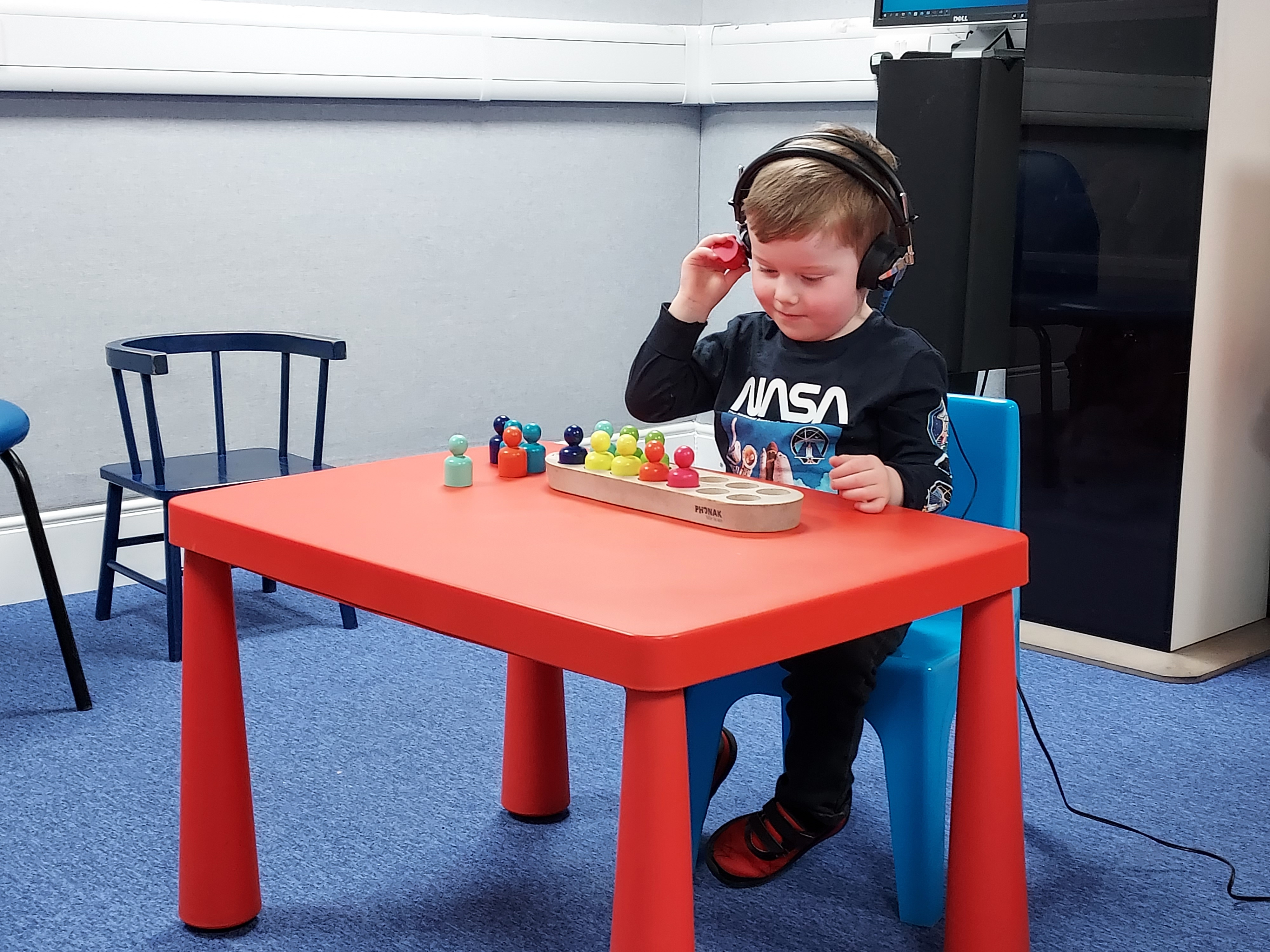Hearing assessment
During the assessment, we will initially ask you a few questions about your child’s hearing, development and general health prior to testing. If your child is particularly restless on the day of your visit, we may decide to complete the hearing test before taking a history.
Multiple methods can be used to test a child’s hearing; tests will be selected on an individual basis to suit your child’s age and development. We will usually have a look in your child’s ears and do a quick check for glue ear known as tympanometry.
Behavioural hearing tests
Behavioural hearing tests require your child to do something in response to sounds. Different behavioural hearing tests may be used for your child depending on their stage of development.
The three main behavioural tests used in audiology are:
- visual reinforcement audiometry (VRA)
- performance/play audiometry
- pure tone audiometry (PTA)
Visual reinforcement audiometry (VRA)
VRA is usually used to test hearing in children from approximately six months of age. During the test, your child will sit on your lap or a chair while sounds are presented through speakers or headphones.

Performance/play audiometry
Young children who are developmentally between the ages of two and six years old may have a play audiometry test.
During the test, sounds will be played through headphones or speakers and your child will be asked to perform a simple task when they hear the sound, for example putting a block on a tower.
As with VRA, the volume and pitch of the sound will be varied to determine the quietest sounds your child is able to hear.

Pure tone audiometry (PTA)
Older children may have a PTA test. During pure tone audiometry, sounds are played through headphones and your child is asked to respond when they hear them by pressing a button. By changing the level of the sound, the tester can work out the quietest sounds your child can hear.
Objective hearing tests
Objective hearing tests do not require a behavioural response from the child. They are most commonly used for younger babies but can also be useful for older children who are not developmentally ready for behavioural tests.
Auditory brainstem response (ABR)
ABR testing uses electrode ‘sticky pads’ placed behind the ears and on the forehead to measure the brain's response to sounds while your baby/child is asleep. Sounds are usually played to your child via headphones and the audiologist will look for a typical waveform response to the sound. The audiologist can adjust the levels to find the quietest level that a response is clearly present for. If your baby doesn’t sleep during the day, we may discuss testing their hearing at home or under sedation or general anaesthetic.
Otoacoutsic emissions (OAEs)
An OAE is an echo generated by the inner ear in response to a sound stimulus. It is measured by a soft tip which is placed into the ear canal. OAEs are usually used as part of the newborn hearing screening programme on newborn babies but can be used on older children and adults too. This test can be affected by wax in the ear canal and middle ear problems such as glue ear.
Tympanometry
Tympanometry is a test of the middle ear status and eardrum movement. It measures the response of the ear drum and middle ear to a change in pressure. A soft tip is placed into the ear canal to record the response. This test is usually used to assess for glue ear which is common in young children.